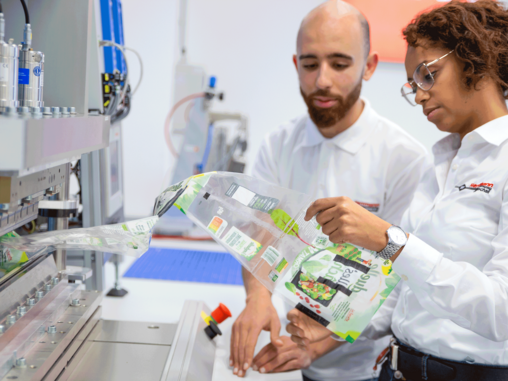Don't be afraid of the PPWR

Safe sealing of eco-friendly packaging with ultrasonics
Sustainable packaging materials are crucial to meeting the demands of the PPWR, but processing them using conventional methods is anything but easy. With ultrasonics, it is possible to seal the challenging materials safely - thanks to cold welding tools and precise controller.
The packaging industry is striving for sustainable solutions and is increasingly relying on mono-materials, paper-based packaging and cardboard packaging. However, sealing these sensitive packaging materials poses challenges for conventional methods - high reject rates are often the result.
Ultrasonic sealing technology offers a precise and efficient solution to meet the requirements for safe seals, even on materials with the narrowest process windows. As a result, the technology offers an easy and safe transition to PPWR-compliant packaging materials.
Monomaterials and their advantages
Monomaterials are particularly well known for their recyclability. The more homogeneous the material, the easier and more efficient recycling is. In recent years, the use of monomaterials has increased, especially for packaging such as wet pet food and cut lettuce. Legal requirements such as the PPWR and individual sustainability targets are accelerating the transition to such packaging materials.
Challenges of heat sealing
Despite the advantages of monomaterials, there are difficulties in processing. Recyclable composites such as OPP/PP are sensitive to thermal damage.
Conventional heat-sealing processes that use external heat often lead to film shrinkage and creasing, which affects the tightness and appearance of the packaging and results in high reject rates.
Ultrasonics as a solution
Ultrasonic sealing is a gentle and efficient alternative. The necessary heat is generated by friction inside the films, while the sealing tools remain cold. This protects the carrier layer and ensures a tight and visually perfect seal.
The energy consumption is significantly lower and can be precisely adjusted to the material properties, ensuring reproducible results with minimal consumption.
Paper-based packaging
In addition to monomaterials, paper-based packaging is also becoming increasingly important. This usually contains a small amount of plastic to serve as a barrier for product protection.
The plastic content of the materials varies depending on the country, which influences recyclability. Packaging with minimal plastic content is the most sustainable, as it is easier to integrate into the paper recycling cycle - but it is simultaneously the most difficult to process.
Sealing with ultrasonics also offers advantages here, as it avoids burns and other damage that can occur with heat-sealing processes.
Practical implementation and tests
Prior to the introduction of monomaterials or paper-based packaging, feasibility tests are carried out in ultrasonic laboratories. These tests evaluate the weldability of the materials using ultrasonics and check the quality of the weld using various analysis methods. The results help to determine the necessary effort and steps for implementing the new materials.
Switching to sustainable packaging materials sometimes only requires adjustments to the welding parameters, while in other cases completely new welding processes need to be developed.
Individual welding solutions are developed in close cooperation with customers and, if required, new ultrasonics welding tools are designed and manufactured. This ensures a reliable process with tight seals and a perfect appearance.
Do you want to seal your Ready Meals more sustainably? Find out how!


